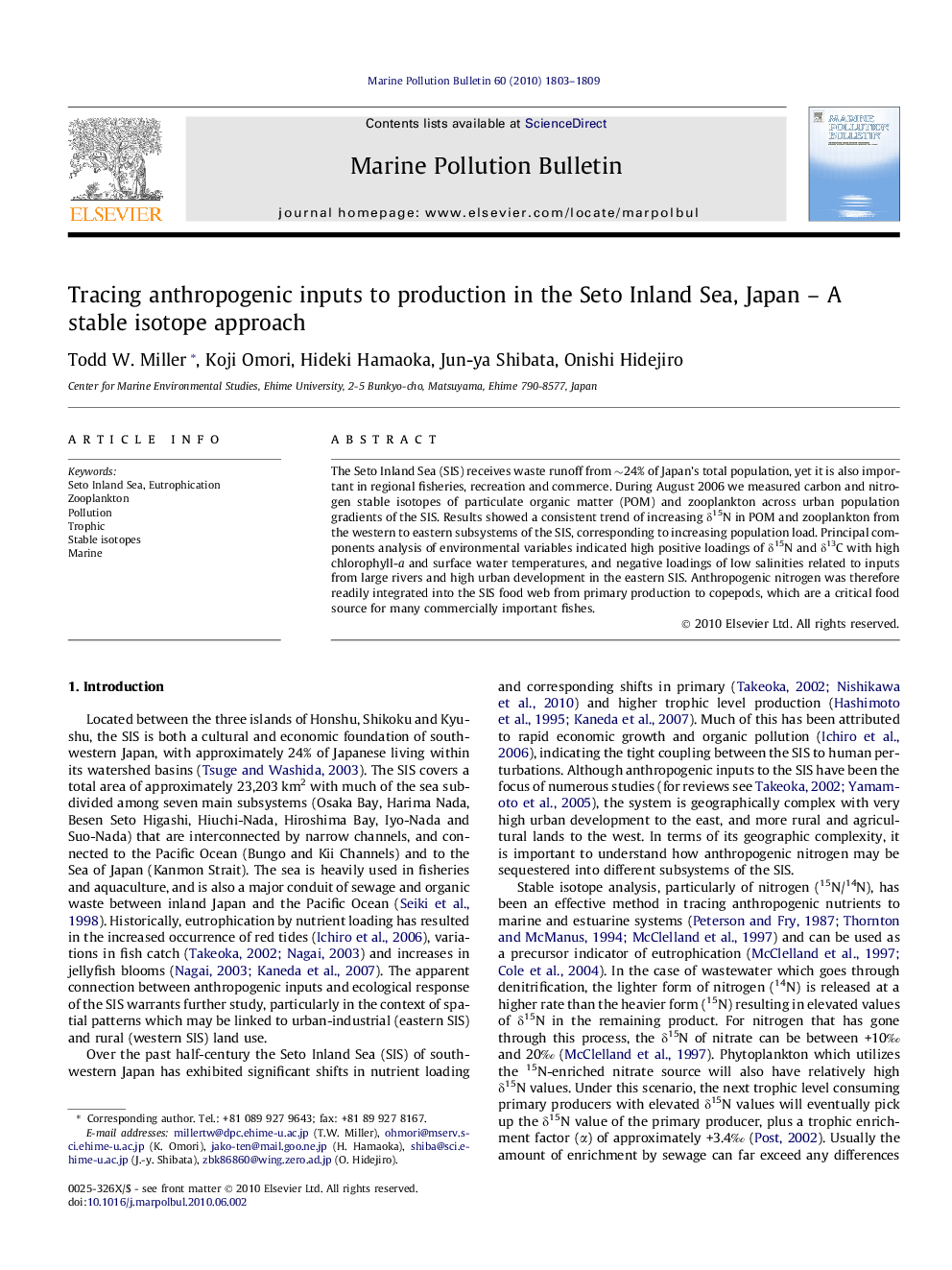| Article ID | Journal | Published Year | Pages | File Type |
|---|---|---|---|---|
| 6362419 | Marine Pollution Bulletin | 2010 | 7 Pages |
Abstract
The Seto Inland Sea (SIS) receives waste runoff from â¼24% of Japan's total population, yet it is also important in regional fisheries, recreation and commerce. During August 2006 we measured carbon and nitrogen stable isotopes of particulate organic matter (POM) and zooplankton across urban population gradients of the SIS. Results showed a consistent trend of increasing δ15N in POM and zooplankton from the western to eastern subsystems of the SIS, corresponding to increasing population load. Principal components analysis of environmental variables indicated high positive loadings of δ15N and δ13C with high chlorophyll-a and surface water temperatures, and negative loadings of low salinities related to inputs from large rivers and high urban development in the eastern SIS. Anthropogenic nitrogen was therefore readily integrated into the SIS food web from primary production to copepods, which are a critical food source for many commercially important fishes.
Related Topics
Physical Sciences and Engineering
Earth and Planetary Sciences
Oceanography
Authors
Todd W. Miller, Koji Omori, Hideki Hamaoka, Jun-ya Shibata, Onishi Hidejiro,
